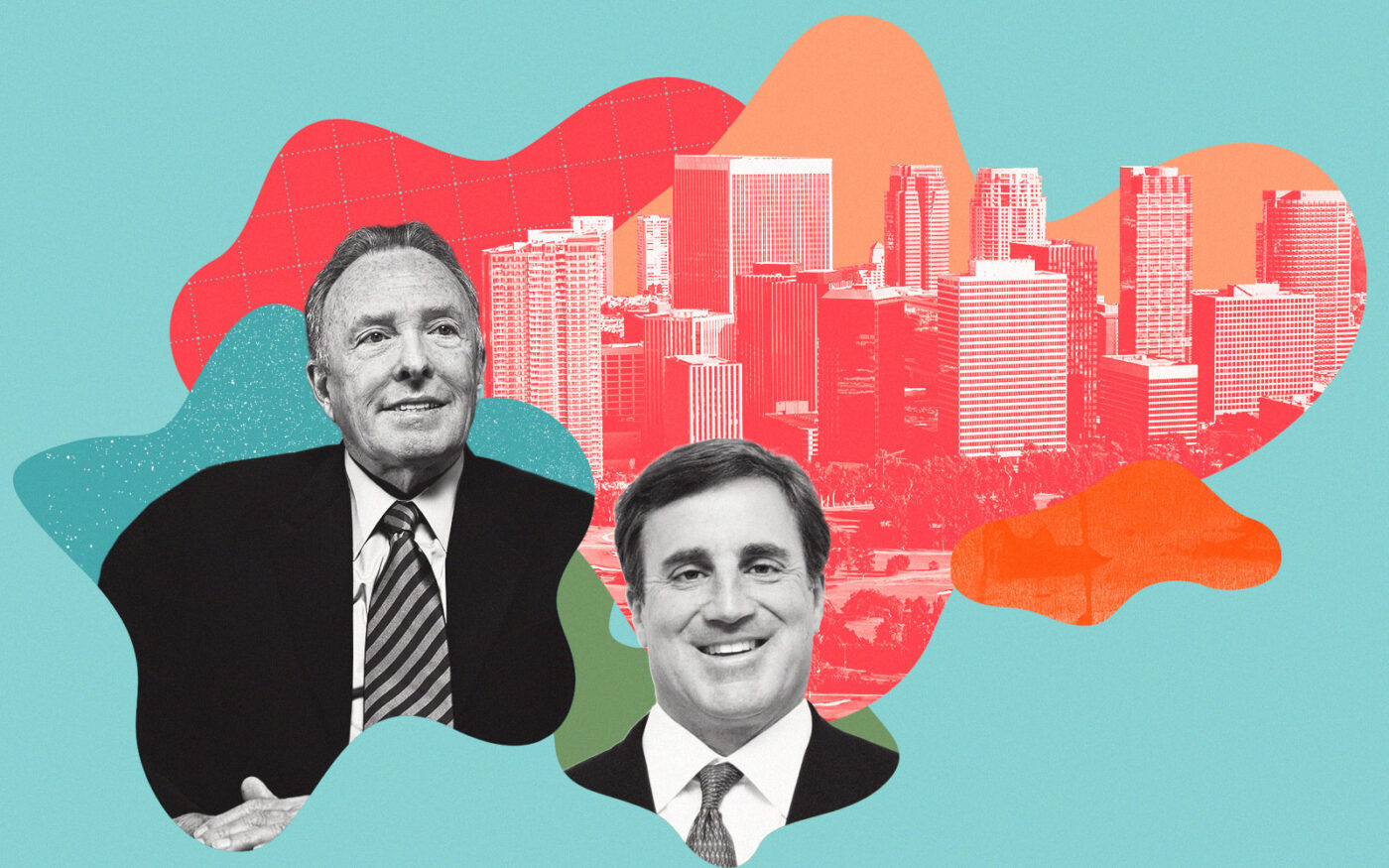Over the summer, Clearlake Capital signed a 15-year lease to take about 150,000 square feet at a JMB Realty-owned office building in Century City.
The building is not even finished — and won’t be until 2026. Yet Clearlake signed the lease for $12 per square foot per month, about $144 per foot a year, according to sources familiar with the deal.
Office buildings across L.A. are asking $3.86 a month on average, or $46 a year, according to Savills. In reality, signed leases score even less, given landlords provide concessions such as a couple months of free rent.
Clearlake’s lease is the poster child for the success of Century City’s office market. The West L.A. hub has commanded some of the highest asking rents in both Los Angeles and up and down the West Coast.
“It’s the best office market in the country,” Kevin Shannon, who runs Newmark’s West Coast capital markets team, said. “One Vanderbilt [in New York City] may be the most expensive building in the country, but Century City is the best submarket.”
Century City’s office market stands in stark contrast to Downtown Los Angeles, where buildings have traded for about $150 per square foot and owners have walked away from trophy assets.
About 16 percent of all office space in Century City was available for lease in the third quarter, about 10 percentage points lower than the overall L.A. market.
And no other West L.A. market comes close — more than 30 percent of office space is available in Miracle Mile, Santa Monica, Playa Vista and Park Mile (which has an availability rate of 45 percent).
Average monthly asking rents for trophy properties in Century City were more than $8 a foot, according to Gary Weiss, who runs brokerage LA Realty Partners.
Most brokers cite two primary reasons tenants choose Century City over other submarkets: safety and proximity to where executives live. It’s akin to Disneyland for executives and office workers — offices are minutes away from the Los Angeles Country Club, steps away from the Westfield Century City mall and home to $10-million-plus condos. It enjoys quick access to West Los Angeles on one side and Beverly Hills on the other.
“It’s good to be a landlord in Century City,” Weiss said in an interview over the summer.
Distress-free zone
Downtown L.A. has become a hub of distress over the last year, as office landlords with floating-rate loans struggle to keep up with rising debt payments and huge swaths of vacant floors. Take Brookfield, which has defaulted on $1.1 billion in loans this year — two of its prime buildings are now in receivership.
Century City, on the other hand, has seen no distress.
“Owners there have lower leverage, rising rents and single-digit vacancy,” Shannon said.
No office owners have defaulted on loans tied to office towers in Century City. And while not necessarily a driving factor, tenants do look at ownership stability as a factor when deciding whether to lease a building.
“The ownership of Century City — 100 percent of those buildings have long-term owners that are not going anywhere,” Laura Stumm, a capital markets broker at Newmark, said at The Real Deal’s L.A. Forum last month. “You want a tenant improvement package, they can give it to you; leasing commissions are no big deal. It’s stable.”
Douglas Emmett, which owns about 9 million square feet in Century City, or about 9 percent of the submarket’s office stock, said 92 percent of its Century City portfolio was leased at the end of last year, according to financial filings.
When Donald Bren’s Irvine Company, another large owner in Century City, announced the signing for 92,000 square feet of leases at 2121 Avenue of the Stars last year, it touted its “financial strength” as a reason tenants signed.
“We are yet to see an illiquidity concern in Century City that other submarkets across the nation may be seeing,” CBRE’s Blake Mirkin said in an email.
In 2021, CommonWealth Partners and California pension fund CalPERS scored a $200 million refinance deal on 1888 Century Park East, a 530,000-square-foot tower. The deal was packaged into three commercial mortgage-backed securities pools, according to Morningstar.
Unlike Brookfield’s debt tied to some of its Downtown L.A. towers, CommonWealth and CalPERS’s loan was fixed-rate — despite interest rates soaring, it’s still paying 3 percent on the debt.
In December, the landlords brought in more than three times what was needed to service the debt — and the property was 91 percent occupied.
Investor appetite
Last month, Stumm had a request from Deka, the German investment firm. It wanted a trophy asset in Los Angeles, something for its core portfolio.
“Everything that’s not on the Westside was eliminated,” Stumm said at last month’s event. Beverly Hills was also crossed off the list, given that most of its office stock is older.
Stumm boiled it down to Century City and Playa Vista — the only two submarkets with newer properties and decent occupancy rates.
However, no one in Century City is willing to sell.
“They’re long-term holds — there’s not a lot of opportunity to break into the market,” Shannon said of Century City’s primary office owners.
Irvine Company has owned Fox Plaza in Century City since 2000, when it bought the 711,000-square-foot building for a record $350 million.
“There hasn’t really been a test,” Shannon said, when asked whether there was investor interest in Century City office properties.
“There are trophies and trainwrecks,” he added. “Century City is a market full of the top 10 percent of buildings.”
